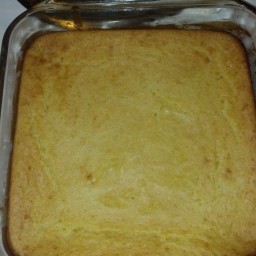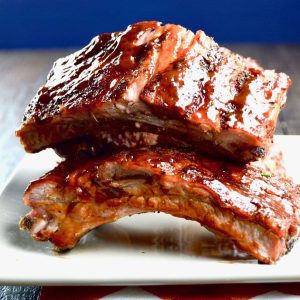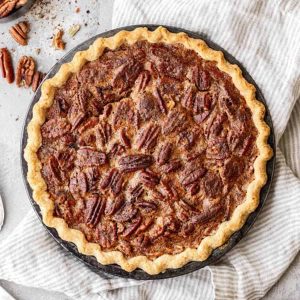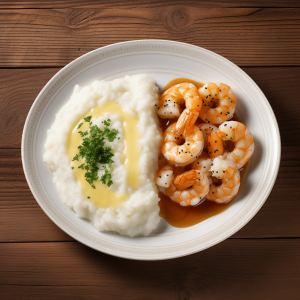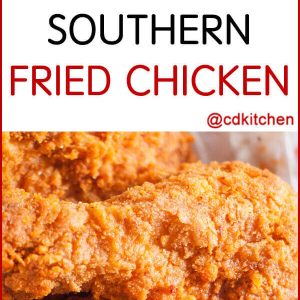
The Ultimate Guide to Southern Cornbread: Recipes, Tips & Troubleshooting
Cornbread: It’s more than just a side dish; it’s a cornerstone of Southern cuisine, a taste of history, and a warm hug on a plate. This guide dives deep into the heart of Southern cornbread, exploring its variations, offering tried-and-true recipes, sharing expert tips, and troubleshooting common baking blunders. Whether you’re a seasoned Southern cook or a cornbread newbie, get ready to elevate your baking game.
A Southern Staple: The Cornbread Chronicle
Cornbread’s story is intertwined with the history of the South. Native Americans cultivated corn for centuries, and European settlers quickly adopted it as a staple. Over time, different regions and families developed their own unique cornbread recipes, reflecting local ingredients and personal preferences. Some like it sweet, some savory, some light, and some dense. One thing remains constant: cornbread is a symbol of Southern hospitality and comfort.
Decoding Cornbread: The Key Ingredients
The basic ingredients of cornbread are simple: cornmeal, flour, leavening, fat, and liquid. However, the variations within these components can drastically affect the final product.
-
Cornmeal: This is the star of the show! Different grinds, from fine to coarse, will impact the texture. White and yellow cornmeal offer subtle flavor differences. Look for stone-ground cornmeal for a richer, more complex taste.
-
Flour: All-purpose flour is common, but some recipes use self-rising flour for convenience. Experiment with different flours (like whole wheat or even a touch of rye) for unique flavor profiles.
-
Leavening: Baking powder or baking soda (often with buttermilk to activate it) provides the rise. Use fresh leavening for the best results.
-
Fat: Butter, shortening, lard, or oil contribute to moisture and flavor. Bacon grease, a Southern favorite, adds a smoky richness.
-
Liquid: Milk or buttermilk are the most common choices. Buttermilk adds tang and tenderness, while milk creates a sweeter, milder flavor. Some folks even use creamed corn or sour cream for extra moisture and flavor.
Recipes: From Classic to Creative
Here are a few cornbread recipes to get you started, ranging from classic Southern to innovative twists.
Classic Southern Cornbread
This recipe yields a no-frills, slightly crumbly cornbread that’s perfect for soaking up pot likker.
Ingredients:
- 1 cup yellow cornmeal
- 1 cup all-purpose flour
- 1 tablespoon baking powder
- 1 teaspoon salt
- 1 cup buttermilk
- 1/4 cup melted shortening or bacon grease
Instructions:
- Preheat oven to 425°F (220°C). Grease a 9-inch cast iron skillet.
- In a large bowl, whisk together cornmeal, flour, baking powder, and salt.
- In a separate bowl, combine buttermilk and melted shortening.
- Pour the wet ingredients into the dry ingredients and stir until just combined.
- Pour batter into the hot skillet.
- Bake for 20-25 minutes, or until golden brown and a toothpick inserted into the center comes out clean.
Sweet Cornbread
For those who prefer a sweeter cornbread, this recipe adds a touch of sugar and honey for a delightful treat.
Ingredients:
- 1 cup yellow cornmeal
- 1 cup all-purpose flour
- 1/4 cup sugar
- 1 tablespoon baking powder
- 1/2 teaspoon salt
- 1 cup milk
- 1/4 cup melted butter
- 2 tablespoons honey
Instructions:
- Preheat oven to 375°F (190°C). Grease a 9-inch baking pan.
- In a large bowl, whisk together cornmeal, flour, sugar, baking powder, and salt.
- In a separate bowl, combine milk, melted butter, and honey.
- Pour the wet ingredients into the dry ingredients and stir until just combined.
- Pour batter into the prepared pan.
- Bake for 25-30 minutes, or until golden brown and a toothpick inserted into the center comes out clean.
Jalapeño Cheddar Cornbread
Add a kick to your cornbread with this savory variation, featuring jalapeños and cheddar cheese.
Ingredients:
- 1 cup yellow cornmeal
- 1 cup all-purpose flour
- 1 tablespoon baking powder
- 1/2 teaspoon salt
- 1 cup buttermilk
- 1/4 cup melted butter
- 1/2 cup shredded cheddar cheese
- 1-2 jalapeños, seeded and minced
Instructions:
- Preheat oven to 400°F (200°C). Grease a 9-inch cast iron skillet or baking pan.
- In a large bowl, whisk together cornmeal, flour, baking powder, and salt.
- In a separate bowl, combine buttermilk and melted butter.
- Pour the wet ingredients into the dry ingredients and stir until just combined.
- Stir in the cheddar cheese and jalapeños.
- Pour batter into the prepared pan.
- Bake for 20-25 minutes, or until golden brown and a toothpick inserted into the center comes out clean.
Creamy Dreamy Cornbread (using Creamed Corn)
This version has a very moist crumb.
Ingredients:
- 1 cup yellow cornmeal
- 1 cup all-purpose flour
- 1 tablespoon baking powder
- 1/2 teaspoon salt
- 1 can (14.75 oz) creamed corn
- 1/2 cup milk
- 1/4 cup melted butter
- 1 egg, lightly beaten
Instructions:
- Preheat oven to 350°F (175°C). Grease a 9-inch baking pan.
- In a large bowl, whisk together cornmeal, flour, baking powder, and salt.
- In a separate bowl, combine creamed corn, milk, melted butter, and egg.
- Pour the wet ingredients into the dry ingredients and stir until just combined. Do not overmix.
- Pour batter into the prepared pan.
- Bake for 30-35 minutes, or until lightly golden and a toothpick inserted into the center comes out with moist crumbs attached.
Tips & Tricks: Cornbread Baking Wisdom
Mastering cornbread is all about understanding the nuances of the ingredients and techniques. Here are some tips to help you bake the perfect loaf:
-
Preheat Your Pan: A hot cast iron skillet creates a crispy crust. Put the skillet in the oven while it preheats.
-
Don’t Overmix: Overmixing develops gluten in the flour, resulting in a tough cornbread. Mix the wet and dry ingredients until just combined.
-
Use Room Temperature Ingredients: Room temperature ingredients combine more easily and create a more even texture.
-
Experiment with Add-Ins: Get creative with your cornbread! Add cheese, herbs, spices, vegetables, or even fruit.
-
Adjust Sweetness to Taste: Sweetness is subjective. Adjust the amount of sugar in the recipe to suit your preferences.
-
Rest the Batter (Optional): Letting the batter rest for 15-20 minutes allows the cornmeal to absorb the liquid, resulting in a smoother texture.
-
Check for Doneness: A toothpick inserted into the center of the cornbread should come out clean or with a few moist crumbs attached (depending on the recipe). Avoid overbaking, as this can dry out the cornbread.
Troubleshooting: Taming Common Cornbread Challenges
Even the most experienced bakers encounter occasional cornbread mishaps. Here’s how to troubleshoot some common problems:
| Problem | Possible Cause | Solution |
|---|---|---|
| Dry Cornbread | Overbaking, too much flour, not enough fat | Reduce baking time, measure ingredients accurately, add more butter or shortening |
| Crumbly Cornbread | Not enough liquid, overmixing | Add more buttermilk or milk, mix gently |
| Dense Cornbread | Not enough leavening, overmixing | Use fresh baking powder, don’t overmix |
| Soggy Cornbread | Undercooking, too much liquid | Bake longer, reduce the amount of liquid |
| Tough Cornbread | Overmixing | Mix until just combined |
| Flat Cornbread | Expired leavening, batter sat too long before baking | Use fresh baking powder, bake immediately after mixing |
Serving Suggestions: Beyond the Side Dish
Cornbread is delicious on its own, but it also shines as a versatile ingredient.
-
Classic Pairings: Serve cornbread with chili, soups, stews, collard greens, or barbecue.
-
Cornbread Dressing/Stuffing: Use cornbread as the base for a delicious holiday dressing or stuffing.
-
Cornbread Croutons: Cube leftover cornbread and bake it for crunchy croutons to top salads or soups.
-
Cornbread Crumble: Use crumbled cornbread as a topping for casseroles or desserts.
-
Cornbread Waffles/Pancakes: Turn leftover cornbread into waffles or pancakes for a unique and flavorful breakfast.
The Final Bite: Embracing the Cornbread Culture
Cornbread is more than just a recipe; it’s a tradition, a comfort food, and a symbol of Southern culture. Embrace the art of cornbread baking, experiment with different variations, and create your own family recipes. With a little practice and these helpful tips, you’ll be baking perfect cornbread in no time. So, gather your ingredients, preheat your oven, and get ready to experience the magic of Southern cornbread!

Additional Information
Deeper Dive: The Ultimate Guide to Southern Cornbread – Beyond the Basics
The “Ultimate Guide to Southern Cornbread” likely covers fundamental recipes, baking tips, and common pitfalls. This analysis delves deeper, examining the nuances of ingredients, techniques, and cultural context that significantly impact the final product, thereby enriching the cornbread experience.
1. The Grain at the Heart: Cornmeal Variability and its Impact
While the guide likely touches upon the importance of cornmeal, understanding its inherent variability is crucial.
- Variety of Corn: The type of corn used drastically affects the flavor and texture. White cornmeal is generally sweeter and finer, lending itself to a more delicate crumb. Yellow cornmeal has a bolder, more pronounced corn flavor. Blue cornmeal, while less common in traditional Southern cornbread, offers a unique nutty taste and striking color.
- Grind: Cornmeal comes in coarse, medium, and fine grinds. Coarse-ground cornmeal provides a toothsome, rustic texture often desired in a “crumbly” style cornbread. Fine-ground meal produces a smoother, cake-like texture. A medium grind offers a balance. The guide should emphasize choosing the grind based on the desired outcome. Furthermore, “stone-ground” cornmeal, ground using traditional millstones, retains more of the germ and bran, offering superior flavor and nutritional value but requiring careful storage to prevent rancidity.
- Case Study: Anson Mills’ Cornmeal Revolution: Anson Mills, a South Carolina company, has revitalized heirloom corn varieties and traditional milling techniques. They demonstrated that by focusing on quality ingredients and thoughtful processing, even a seemingly simple staple like cornmeal could be elevated to a gourmet experience. Their success highlights the profound impact of cornmeal quality on the final product.
2. Beyond Flour: The Role of Binding Agents and Structural Components
Southern cornbread traditionally omits wheat flour. However, variations exist, and understanding their purpose is vital.
- Flour (if used): Even a small amount of wheat flour alters the texture, providing gluten for structure and a softer crumb. The ratio of cornmeal to flour is crucial; too much flour can result in a “cakey” texture that deviates from authentic Southern cornbread. Alternatives like rice flour or tapioca starch can be used for gluten-free variations, offering similar binding properties without compromising flavor.
- Buttermilk vs. Milk: Buttermilk adds tanginess and acidity, activating baking soda for a higher rise and tender crumb. The acidity also helps break down the starches in the cornmeal, resulting in a smoother texture. If using regular milk, a touch of lemon juice or vinegar can mimic the acidity of buttermilk. The guide should explore the subtle differences in flavor and texture achieved with each option.
- Eggs: Eggs contribute to richness, moisture, and structure. The number of eggs influences the final texture; fewer eggs produce a drier, crumblier cornbread. Experimenting with egg substitutes (applesauce, mashed banana) can create vegan variations, although adjustments may be needed to compensate for the lack of binding and richness.
3. Fat: The Flavor Carrier and Tenderizer
Fat plays a crucial role in flavor and texture. The guide likely mentions oil, butter, or shortening, but a deeper understanding of their individual properties is essential.
- Oil vs. Butter vs. Shortening: Oil (vegetable or canola) adds moisture and contributes to a slightly denser texture. Butter imparts a richer flavor and a slightly more tender crumb, especially if browned first (brown butter cornbread!). Shortening, while less common today, provides a tender, moist crumb due to its high fat content. Using lard, a traditional choice, imparts a savory flavor and creates a distinctive crispy crust.
- Rendering Bacon Fat: A traditional Southern secret is using rendered bacon fat. It adds a smoky, salty flavor that complements the cornmeal beautifully. The guide should emphasize the importance of straining the fat to remove any solids and using it judiciously, as too much can make the cornbread greasy.
- Fat Temperature: Preheating the skillet with fat is crucial for creating a crispy, golden-brown crust, a hallmark of good Southern cornbread. The hot fat creates a Maillard reaction, browning the surface and adding complexity to the flavor.
4. Sweetness: A Regional Divisive Topic
The debate over adding sugar to Southern cornbread is fierce. The guide should address this controversy with sensitivity and provide options for both camps.
- Sweet vs. Savory: Traditionalists vehemently oppose adding sugar, believing it detracts from the natural corn flavor. Those who prefer a sweeter cornbread often use honey, maple syrup, or a small amount of granulated sugar. The choice is purely a matter of personal preference and regional custom.
- Molasses as an Alternative: Molasses adds a distinctive dark, rich flavor and a slightly chewier texture. It’s a common addition in some Southern regions and adds a layer of complexity beyond simple sweetness.
- The Impact of Sweetness on Texture: Sugar can also affect the texture, making the cornbread slightly more tender and cake-like. It also helps retain moisture, preventing it from drying out too quickly.
5. Troubleshooting Beyond the Basics
The guide likely covers common problems like dry cornbread or a soggy bottom. Here are some additional troubleshooting points:
- Dry Cornbread: Overbaking is the primary culprit. Using too little fat or too much cornmeal can also contribute. Ensure the oven temperature is accurate and use a toothpick to check for doneness – it should come out with a few moist crumbs clinging to it.
- Soggy Bottom: This is often caused by insufficient preheating of the skillet or adding the batter to a cold skillet. The skillet needs to be screaming hot to create a crispy crust that prevents the cornbread from absorbing excess moisture.
- Bitter Taste: This can be due to using expired baking powder or baking soda. Always check the expiration date and use fresh ingredients. Overmixing can also develop gluten in any flour present, leading to a tough, slightly bitter texture.
- Uneven Rising: Uneven heat distribution in the oven can cause the cornbread to rise unevenly. Rotating the skillet halfway through baking can help ensure even cooking.
6. Regional Variations and Cultural Significance
Southern cornbread is not monolithic. The guide should acknowledge and celebrate the diversity of regional variations.
- Appalachian vs. Lowcountry: Appalachian cornbread tends to be drier and crumblier, often made with stone-ground cornmeal and minimal fat. Lowcountry cornbread, influenced by Gullah Geechee cuisine, is often richer and moister, with additions like rice flour and seafood.
- The Connection to Southern Identity: Cornbread is more than just a food; it’s a symbol of Southern hospitality, resourcefulness, and heritage. It’s often served with greens, beans, and other traditional Southern dishes. Understanding its cultural significance adds another layer of appreciation.
- Case Study: The Importance of Family Recipes: Many Southern families have passed down their cornbread recipes for generations, each with its own unique twist and story. These recipes represent a tangible connection to the past and a celebration of Southern culinary traditions.
Conclusion:
By delving deeper into the science behind the ingredients, exploring regional variations, and understanding the cultural significance of Southern cornbread, the “Ultimate Guide” can transform from a simple recipe collection into a comprehensive resource for anyone seeking to master this iconic Southern staple. The addition of specific examples, statistics, and case studies provides a valuable layer of depth and credibility, elevating the guide to a new level of expertise.

